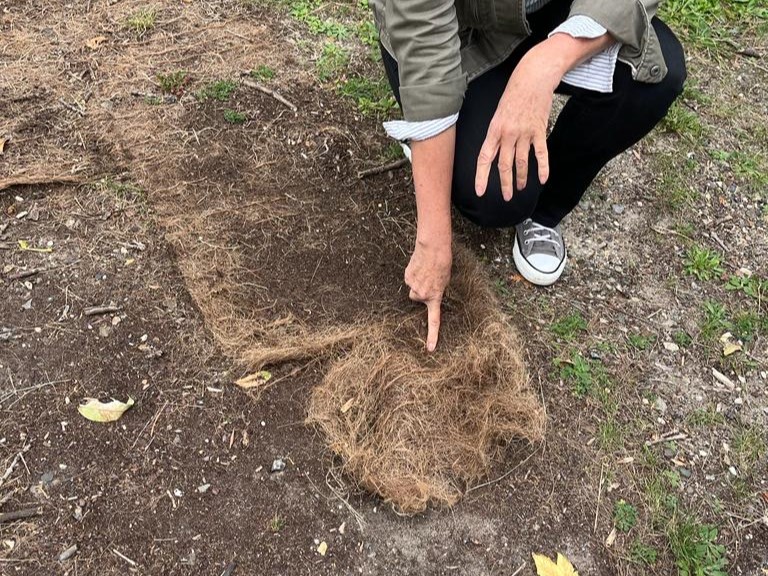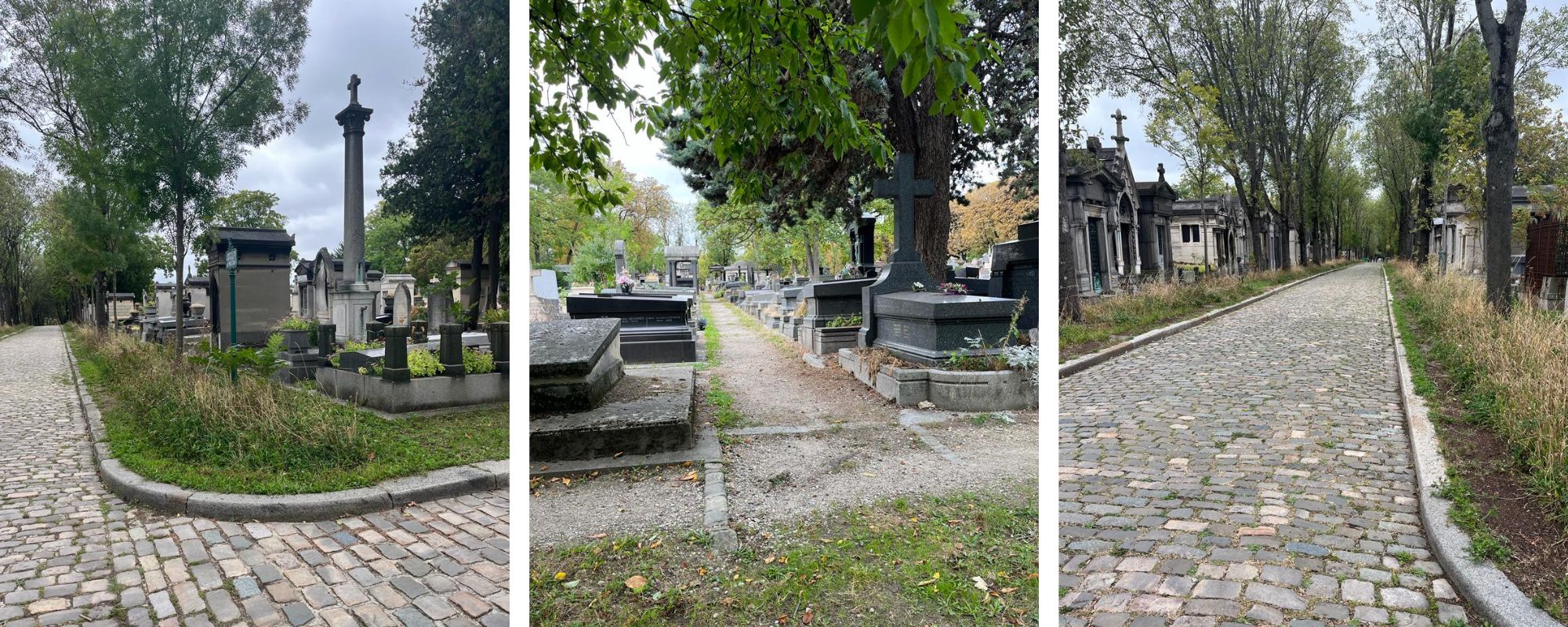Pesticide-Free Paris: Cemeteries
The Ville de Paris (the city’s maintenance service) manages 14 cemeteries in the French capital, a total of 420 hectares of land, each one with its own set of varied needs. Every cemetery has an adapted weed management plan which varies depending on terrain, the frequency of funerals it hosts, tourism status and cultural worth.
Pere Lachaise: A case study
The iconic Pere Lachaise Cemetery is the largest green space in the inner city, with 44 hectares and 5,000 trees to manage. It is the most visited cemetery in Paris and used to be a heavily paved space, full of paths and roads to allow for the thousands of mourners and tourists that visit all-year round.
 In order to better maintain the site without pesticides and to encourage biodiversity, tarmacked pavements and smaller gravel pathways are gradually being covered with a ‘plant carpet’. This consists of a variety of grasses growing in soil which is enmeshed in a biodegradable layer. Over time this layer stabilises into an even and continuous ground cover, out-competing unwanted plants.
In order to better maintain the site without pesticides and to encourage biodiversity, tarmacked pavements and smaller gravel pathways are gradually being covered with a ‘plant carpet’. This consists of a variety of grasses growing in soil which is enmeshed in a biodegradable layer. Over time this layer stabilises into an even and continuous ground cover, out-competing unwanted plants.
Some verges are maintained as lawns which can be regularly cut with electric mowers (these areas are often used to scatter ashes). Other verges are left to grow tall, with mown borders creating ‘tidy edges. Smaller path edges are left to grow longer, with plants on the paths themselves kept at a lower height through footfall or mowing.
Electric secateurs are employed in the narrow edges around graves, to prevent the establishment of perennials. It is worth noting that in France maintenance teams will remove invasive species or structurally dangerous plants around a grave, but will leave the family to maintain the spot as they wish, only taking action if notified by the family of unwanted growth.
As a result of this maintenance regime, many beautiful and rare plants have taken root and richer wildlife, including weasels and foxes (which are rarer in French urban spaces) have moved in.

Overcoming problems
The transition to ‘pesticide-free’ did not happen overnight and did come with some growing pains. There were many complaints in the first year, following a high level of weed growth.
Cemetery management took a proactive approach. Staff, many of whom had been in post for many years with no prior botanical or gardening knowledge, received training on ways to maintain the site with a new focus on encouraging biodiversity. While there was a steep learning curve, new practices were adopted and staff recruited more recently now see these practices as the norm.
A communications campaign to change mindsets and transform concerns of neglect into celebrations of biodiversity was developed. Flyers were handed out to people entering the cemetery on All Saints’ Day and signs were erected to explain the change in appearance. Officers managing the space were trained on what to say to help educate the public. They have since become the best advocates and thanks to these efforts, the Ville de Paris receives far fewer complaints. Meanwhile, the wider public enjoys the maintained wildness of this beautiful green space.
It has taken patience and passion to create a cemetery where people and wildlife can co-exist without the threat of exposure to pesticides. As the managers repeatedly say, “nature is dynamic; nature takes time.” They have found ways to work with wild plants, turning problems into positive outcomes, whilst still maintaining this large urban space to a high standard for mourners and visitors.
